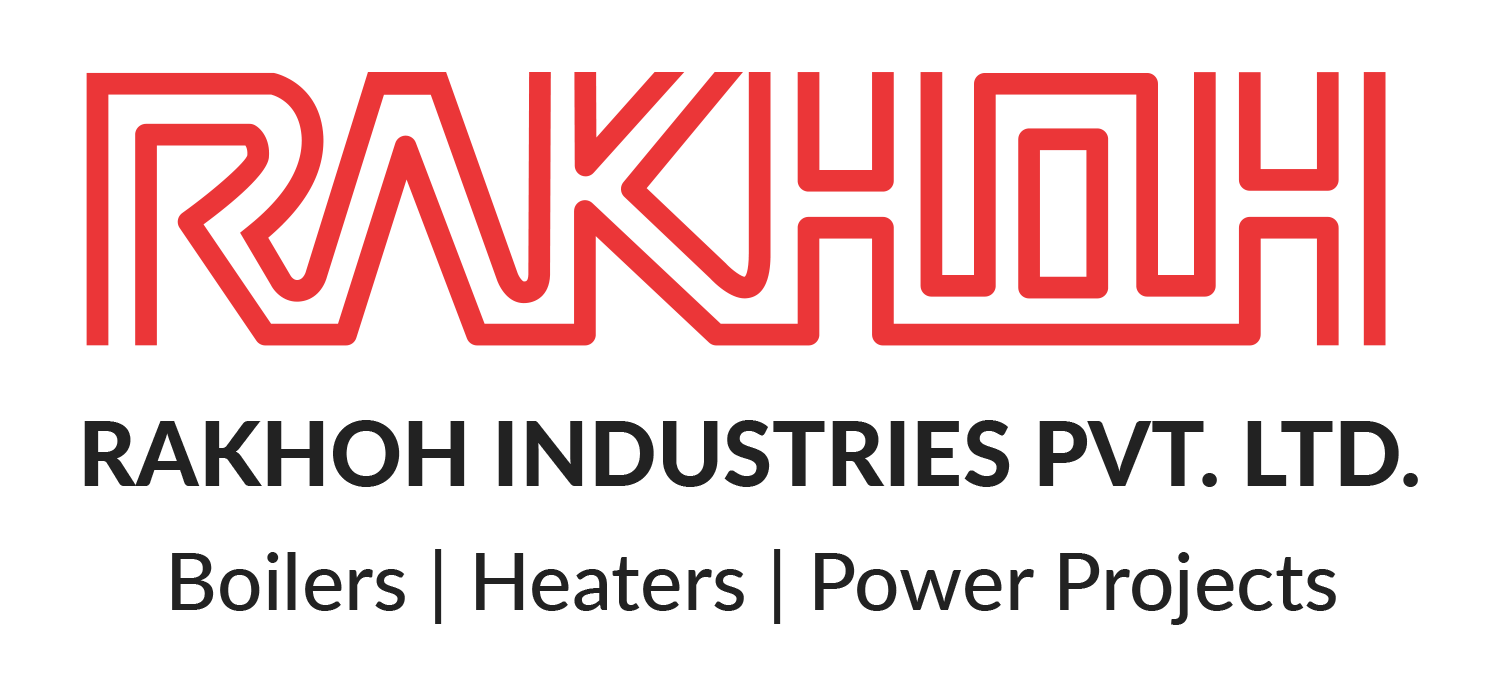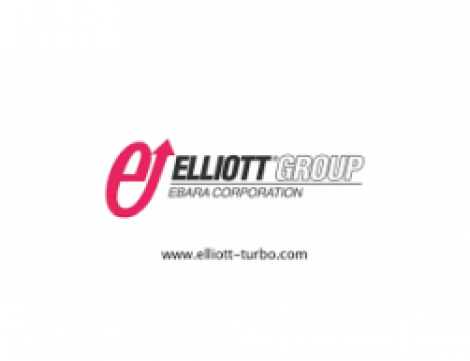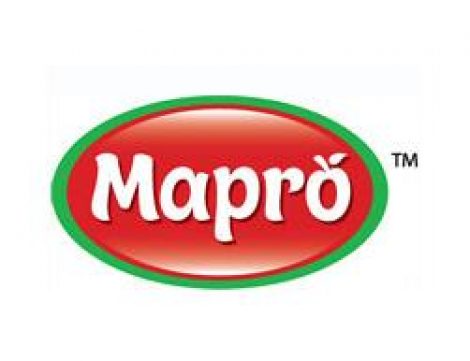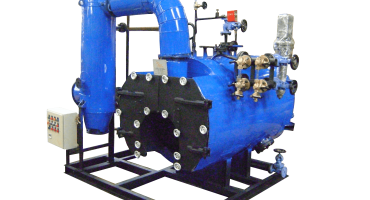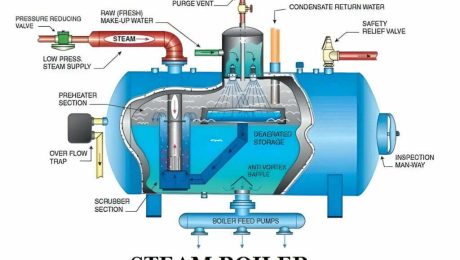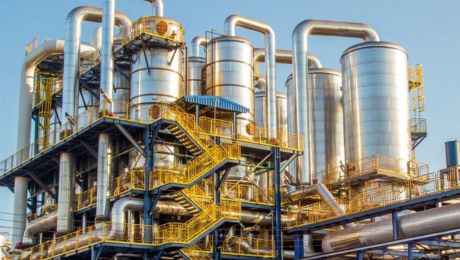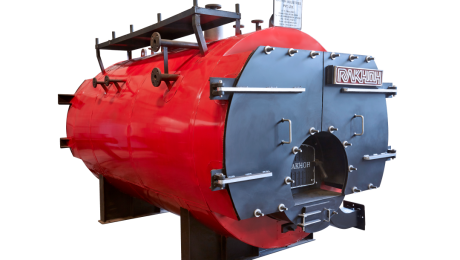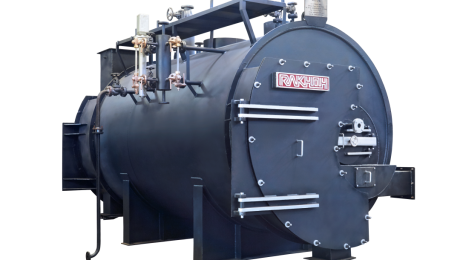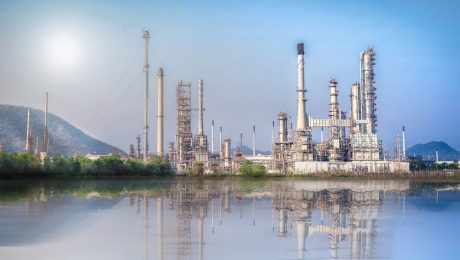Difference between 3 ton, 4 ton, and 5 ton steam boilers
There is a huge requirement for steam and hot water in many factories to be used for both heat and steam meant for heating as well as for power generation. Similar to the amount of steam used, different sizes are used in different steam boilers. One of the usual sizes used in industries is 3 ton, 4 ton, or 5 ton steam boiler. The difference between these should be known in the right choice that goes with your business.
This article focuses on the differences between 3 ton, 4 ton, and 5 ton boilers, respectively, including their specs and technical applications.
What are 3 ton, 4 ton, 5 ton steam boilers?
In boilers, tonnage refers to the steam the boiler can produce in an hour. For example, breakdown:
- A 3 ton boiler can produce about 3 tons (around 6,000 pounds) of steam per hour.
- A 4 ton steam boiler can provide 4 tons per hour of steam or 8,000 pounds
- In the case of a load of 5 tons, the steam boiler can provide 5 tons or 10,000 pounds of steam per hour.
Boiler Applications are dependent on the characteristics and applications of steam. There is a need for a detailed study to understand the different types of boilers.
3 Ton Steam Boiler
Capacity and Application
That falls under medium-sized industries that need around 6,000 pounds of steam each hour and may think a 3 ton steam boiler is a good solution. It would well suit technical usages like textiles, food processing, and small-scale manufacturing units.
Features of 3 Ton Steam Boiler:
- Economically viable for low-capacity plants: With the purchasing and operating costs, the 3 ton steam boiler is more of an economically sensible alternative.
- Less capacity boiler size: 3-ton 1 can be a space-saving option for businesses that work in tight challenging spaces.
- Fuel efficiency for low-capacity operations: These boilers consume less fuel to deliver fewer steam requirements.
Limitations of a 3 ton steam boiler:
- Less steam productivity: It would be rather useless for those industries that require a large quantity of steam.
4 Ton Steam Boiler
Capacity and Application
Since it can produce up to 8,000 pounds of steam per hour, a 4 ton boiler is applied in chemical production, pharmaceutical business, middle-level production sectors, and more.
Advantages of 4 ton steam boiler
- Multi-purpose for medium-scale industries: It is compact and can be used to fulfill the needs of large-scale industries.
- Balanced operational cost: Though a 4 ton boiler is more expensive than a 3 ton boiler, it has a fine balance on both sides when its price is weighed against how much steam it produces.
- Better operation efficiency: The 4 ton boiler is capable of developing capacity for bigger processes without increasing the fuel consumption appreciably.
Limitations of a 4 ton steam boiler
- It consumes more fuel than a 3-ton boiler, though it generates a higher amount of steam, and the requirement of fuel increases with it, thus increasing the operational cost.
5 Ton Steam Boiler
Capacity and Application
The 5 ton steam boiler produces 10,000 pounds of steam per hour and is most appropriate for the majority of sectors, such as energy, heavy industry, and refining. These steam boiler systems are created for those industries where the demand is sizable and used for high demands in steam applications.
Advantages of a 5 ton steam boiler
- The high volume of vapor production for large industries: A 5 ton steam boiler is most suitable for such industries that typically require higher volumes of steam.
- Productive for large-scale operations: A 5 ton steam boiler can be operated on many procedures because of its larger size. Thus, it further facilitates the smooth completion of these operations.
- This boiler is a commercial manufacturer, therefore, they can handle persistent and high-demanding operating tasks.
Limitations
- Short-term and long-term investments: A 5 ton boiler consumes more fuel, and needs more repairs, which increases the expenditure of a business.
- It requires more installation area: A 5 ton boiler requires bigger space to install because it will require a larger capacity and other features.
Difference between 3 Ton, 4 Ton, and 5 Ton Steam Boiler:
- Steam Output: These boilers are different in their steam output. A 4 ton boiler is capable of producing 8,000 pounds of steam per hour, while a 3 ton boiler can produce 6,000 pounds of steam per hour.
- Fuel Consumption: Large boiler operation has a large consumption fuel rate. For example, a bigger 5-ton steam boiler consumes much more fuel, compared to a 3-ton boiler, which reflects high operating costs.
- Cost: The most expensive among the 5 ton steam boilers, cost-wise for procurement and running costs. It is followed by 4 ton and 3 ton models.
- Space Requirements: Being larger in capacity, a 5 ton steam boiler cannot be installed in several small-scale companies because it requires more installation space.
Conclusion: Boiler Manufacturing Expertise of Rakhoh
A high-grade boiler is essential to enhance productivity, reduce the cost of operation, and maintain business operations without breakage in an industry. A boiler may be chosen from 3 tons, 4 tons, or 5 tons according to facility requirements for producing steam, amount of fuel, and operation results.
Rakhoh has earned client confidence in boiler manufacturing for over 40 years by providing high-performance innovative steam boilers. Its modern plant is located in Pune, India, and manufactures steam boilers by professionals who can provide specialized solutions to businesses for their respective needs. It is one of the most popular companies on the market due to its use of a high-pressure boiler, and the Rakhoh area is designed to cater to several specific needs of different sectors including textiles and energy production.
Rakhoh gives its best to the delivery of quality, durability, and innovative thought. It is highly specialized in steam boilers and is completely committed to sustainability by embracing new technological innovations.
- Published in Steam Boiler
Steam Jackets in Boilers | Definition, Types, and Applications
Steam is integral to meet various process operational requirements in manufacturing facilities. High-quality steam is crucial for heating, drying, and sterilizing purposes in industries. Plant managers take several efforts to ensure that maximum heat is retained and utilized during the combustion process. Proper combustion requires an optimal amount of air, water, and fuels. However, waste or loss of heat hinders the steam generation process. It also leads to excess use of fuels that increase the costs. Therefore, steam boilers are installed with various accessories to ensure optimum heat. Steam jacket, also known as the jacketed vessel, is one such boiler accessory for heating and cooling purposes in the steam boiler.
What are Steam Jackets?
Steam jackets are designed in various ways to accomplish particular processing requirements. In other words, steam jackets act as a secondary enclosure over a boiler shell. A steam jacket consisting of an outer cylinder surrounding the vessel is the most commonly used jacketed vessel. The steam circulates on the outer jacket and condenses on the wall. Jacketed vessels contain an internal space or cavity usually filled with circulating fluid that is ideal for heating and cooling monitoring and to ensure minimal condensation on the outer jacket wall as well as the transfer of heat in the vessel.
For jacketed heating purposes, operating temperature is required to be up to 350°F. The steam and hot water generally serve as heat transfer forms. The advantages of using steam jackets are as follows,
The jacket temperature is controlled efficiently with hot water. It helps in preventing damage or loss to the product due to overheating.
Hot water enables the enhanced quality of the product
Hot water distributes heat more uniformly compared to steam. It destroys hot spots that lead to products baking on the walls of the vessel.
With glass-lined reactors, steam can shock and damage the lining. On the other hand, hot water facilitates hassle-free transitions from heating to cooling.
Steam jackets are excellent for heat transfer, easy to control, and efficient to maintain the high quality of the product processed. The heat transfer area or the vessel wall surface area is calculated by using the following formula,
Q = U x A x ΔTm
Although steam jackets are ideal for transferring heat, many process managers opt for hot water instead of steam to heat the jacketed vessels. The vessel walls are designed of stainless steel or glass-lined carbon steel, and the glass lining acts as an additional resistant layer for corrosion. The steam jacket space depends on the vessel size. But usually, its width ranges between 50mm and 300 mm.
Types of Steam Jackets:
There are three major types of steam jackets found,
Conventional steam jackets:
Conventional steam jackets provide excess coverage for the entire or part of the vessel. It is best suited for high-pressure applications by providing excellent insulation benefits and creating both inner and outer vessel walls. These jackets are available in baffled and unbaffled styles, along with agitating nozzles that aids in improving turbulence and overall efficiency in the absence of baffles.
Dimple steam jackets:
Dimple vessel jacket utilizes a light-gauge metal jacket adjoined to the main vessel through spots or plug welds. Such a system provides strength and durability with minimal excess weight or expense.
Half-pipe coil steam jacket:
Half-pipe coil vessel jackets are ideal for high-temperature processing operations in industries. These jackets are best suited for heat transfer and thermic fluid heating systems and are divided into multi-pass zones for maximum flexibility.
Heat transfer can greatly differ from one design to the other as well as from one processing application to the other. Usually, conventional steam jackets require more shell thickness to balance the stress of heat expansion, especially if the jacket and shell are manufactured from different materials. Dimpled steam jackets and half-pipe coil steam jackets are highly preferred for the thermic fluid heating system.
Applications of Steam Jackets:
The closed-loop heating system of the steam jacket fulfills the requirement of heating and cooling for a single process operation in industries. Vessels and equipment that require frequent cleanings also benefit from the jacketed vessel as it spares the equipment from internal coils for heating or cooling. Some of the industries that benefit from the ease and reliability of steam jackets are as follows,
Conclusion:
Rakhoh Boilers are trusted steam boiler manufacturers in Pune for 38+ years, delivering efficient and reliable industrial boilers, waste heat recovery systems, thermic fluid heaters, and boiler accessories in over 26 countries worldwide. We provide excellent boiler services such as steam trap assessment, boiler automation, energy audit, annual maintenance contract, etc., to boost the efficiency and the productivity of the steam boilers.
Explore more about our products and services on www.rakhoh.com
- Published in Steam Boiler, Steam Jackets
Signs that indicate replacement for steam boilers
Steam boilers are vital equipment for steam generation in the process and manufacturing industries. Therefore, it is critical to know when it is time to replace an industrial boiler system. However, it is usually observed that facility managers wait for a steam boiler to break down entirely before replacing the unit. However, upgrading the steam boiler process plants can save a significant amount of money annually while also benefiting from increased efficiency and improved steam production when the boiler operates. Rakhoh Boilers being a trusted name as a boiler manufacturer in India has listed down some of the important signs that indicate the replacement of the steam boiler system.
Outdated Boiler System:
First and foremost, it is important to consider the lifespan of the steam boiler. If the boiler is older than 10-15 years, it is ideal to start looking for a replacement. It is true even if the boiler does not display any major faults. As the technology has advanced significantly in recent years, the old models are incapable of comparing with the efficiency levels, safety features, and smart control options of the latest steam boilers.
Frequent Breakdowns:
If there are occurrences of any type of boiler issues every week or topping up of the pressure, it indicates that things are about to change for the worst. The expenditure of the new parts, call-outs, and quick reparations can be spent much better on a replacement boiler that is efficient and reliable.
Boiler System Emits A Noise:
Sometimes, steam boilers are so outdated that the noises emitted from them are considered normal. On the contrary, the banging, gurgling, and kettling noises heard from the steam boiler indicate a boiler issue. If neglected, it can lead to severe damage in the process plant and breakdown over time.
Yellow-Colored Flame:
A steam boiler functioning properly ensures complete combustion with a blue flame. But, if the boiler flame is yellow, it means that there is a risk of carbon monoxide emission, which is a serious issue. It is a hazardous, odorless, and colorless gas that can prove to be fatal if exposure levels are overly high. The symptoms of carbon monoxide poisoning consist of dizziness, nausea, headaches, and fatigue.
Water Leakages:
If there are any water leakages in the steam boiler system, it can result in significant damage to other steam boiler components. Therefore, it is important to contact an engineer as soon as possible before things escalate and become dangerous.
Replacement Parts Difficult to Find:
If process plants find it difficult to procure the parts of the steam boiler for replacement, it is to be concluded that the system is outdated. It is a quite clear warning sign that the boiler’s days are limited, and replacement of the boiler is the need of the hour.
High Stack Temperature:
If the steam boiler faces unusually high stack temperatures, it is an indication of unsafe conditions and poor heat transfer. It may be caused due to poor water management, poor combustion, or low water level.
Poor Combustion:
Improper or insufficient airflow and fuel flow can lead to significantly noticeable pulsations and surges.
Reduction in Efficiency:
If the steam boiler system takes too long to operate or to generate steam, it showcases the inefficiency of the boiler system. In such situations, it is imperative to contact the boiler manufacturer for their expert guidance in replacing the system.
What is better– Replacement or Retrofitting?
Even if the steam boiler displays no decline in condition or performance, operations managers need to consider whether they should opt for a boiler replacement or retrofit. A boiler retrofit can offer the advantage of increasing the efficiency between 10% and 12%. On the other hand, a complete steam boiler replacement may offer even greater percentages depending on the boiler.
In either case, a retrofit boiler or a complete boiler replacement significantly reduces the future expenses of the process plant. Considering the average boiler consumes up to four times its original value in energy costs per year, it is easy to see how efficiency savings can quickly add up.
Conclusion:
Rakhoh Boilers is one of the trusted boiler manufacturers in Pune since 1983. With 38+ years of experience and expertise in thermal solutions, we deliver highly efficient and reliable industrial steam boilers, waste heat recovery systems, thermic fluid heaters, and boiler accessories to over 20 process industries in 26 countries worldwide. We provide excellent boiler services to boost the efficiency and productivity of the boilers.
Visit www.rakhoh.com for more details on our products and services
- Published in Boiler, Steam Boiler
Role of Steam Boilers in Textile Industries
Most manufacturing industries require steam boilers for accomplishing process operations. Steam is integral for various purposes of heating, drying, processing, sterilizing, etc. The textile industry is one such example that requires steam for its major processing stages. Textile is one of the ancient industries that have witnessed various changes and advancements over the centuries in terms of its processing. Several stages convert the raw fabric into a finished garment. Let us have a look at it in detail,
Yarn Manufacturing or Spinning:
The raw material or fiber and man-made fibers like synthetic or nylon are transported for yarn manufacturing. In this textile process stage, raw materials are converted into yarn for knitting, weaving, or crocheting. The raw materials are sorted and cleaned for creating the final yarn or thread.
Fabric Manufacturing or Weaving:
The next stage of fabric manufacturing involves transporting yarn from one machine to another in order to create a length of fabric.
Wet Processing:
The fabric wet processing operation includes dyeing and finishing of the fabric. The dyeing process introduces colors to the fabric, while the finishing process adds chemical properties such as anti-pill, soil release, flame retardant, etc., to enhance the fabric quality. The printing process includes inkjet printing on fabrics.
Garment Processing and Finishing:
The final process in the textile industry includes designing and sewing the final garments. It is followed by spot removal, ironing, and finishing before transporting it to markets.
Role of Steam Boilers in Textile Processing:
Steam boilers are indispensable in textile processing as the major process operations depend on steam or hot water generated from boilers. Textile processing units consider every factor before selecting a steam boiler that meets their demands effectively. Here are the primary stages of the textile process that requires steam or hot water,
Pre-treatment:
The pre-treatment phase is one of the important stages in the textile process that involves the removal of dirt or impurities from the fabric before the dyeing and printing process. The pre-treatment stage requires efficient steam boilers to produce clean and pure steam or hot water.
Dyeing:
The dyeing stage involves adding pigments or dyes to fabric to color them. Although the dyeing process can occur at any stage, it primarily occurs after the yarn manufacturing or fabric manufacturing stage of the textile process. The transfer of dye to the fabric requires a precise amount of moisture and heat provided by steam. Steam boiler enables the heating of water and steam at the determined temperature that is required to dye the fabric in exact color.
Printing:
The printing stage in the textile process is similar to dyeing except that printing includes patterns or designs to the fabric, whereas dyeing includes uniform coloring. Depending on the type of fabric, the printing stage uses several methods. Steam boilers are essential for providing the precise amount of heat and moisture required for the printing process.
Finishing:
The finishing stage of the textile process involves several steps. It includes the removal of wrinkles from fabric. A steam boiler is vital for providing steam for the ironing purposes that provides excellent finishing.
Factors to Consider while Choosing Steam Boiler for Textile Process:
Deciding a steam boiler for the textile process is imperative to ensure optimal efficiency and productivity. Managers in textile processing units consider the following factors before determining their choice of steam boiler,
Seamless with Fluctuating Demand:
The steam requirements in textile process operations are fluctuating and require robust steam boilers that can effectively handle the changing demands. In such situations, steam boilers with a quick start or shut-off are best-suited for processing. Comparatively, water tube boilers perform better than fire tube boilers with the fluctuating load.
Fuel Efficiency:
Due to fluctuating demand for steam, the textile process faces the difficulty of fuel wastage that leads to excess costs. Therefore, the steam boiler must perform effectively and ensure complete combustion to ensure optimal utilization of fuel.
Easy Maintenance:
Steam boilers in the textile process operate throughout the day and hence require regular maintenance for enhanced results. Negligence of boiler maintenance may cause boiler failure, resultantly shutting the textile process operations and leading to significant losses.
Calculating the Capacity and Heating Parameters of Steam Boilers:
The capacity of a steam boiler depends on the heating load that includes heat losses in boiler tubes and pipes. Additionally, the heating parameters like temperature and pressure must be determined.
Conclusion:
With 38+ years of experience and expertise in thermal solutions, Rakhoh Boilers are the leading boiler manufacturer in India and overseas, with more than 3000 boiler installations in over 26 countries globally. Our Combo X model is the preferred steam boiler model in the textile industry. We have delivered our efficient steam boilers in over 360 textile process and dyeing units. Catering to 20 process industries worldwide, we manufacture steam boilers, waste heat recovery boilers, thermic fluid heaters, and boiler accessories. We offer the best boiler services like boiler automation, steam trap assessment, energy audit, annual boiler maintenance, etc to ensure hassle-free operations of steam boilers.
Visit www.rakhoh.com to know more about our products and services.
- Published in Boiler, Steam Boiler
Prevention of Steam Leakage in Boilers
Steam Boilers are of utmost importance in the process and manufacturing sector to ensure high-quality production or power generation through steam. Therefore, the steam produced in the boiler must be of superior quality. Various parameters are considered to ensure seamless operations of the steam boiler. Steam leakage is a phenomenon that causes loss and inefficiency in the boiler system. Steam is a high-value commodity and leads to a higher value with higher pressure. Therefore, it is necessary to take action to repair steam leaks as soon as they occur. Steam leaks can immensely affect production, cause safety issues, and increase maintenance costs.
An Overview of Steam Leakage in Boiler:
After a few years of operation, steam boilers tend to leak steam due to outdated gaskets, fittings, and other areas. Without proper maintenance and regular inspection, the number of leaks and the volume of leaked steam only increase tremendously.
The most common locations of finding steam leaks are:
Steam leaks from valves and steam traps are further classified into external leaks, such as those from gland packing, and internal leaks that cause steam escaping through the seat and into the outlet. In addition to higher energy costs, steam leaks waste boiler water and chemicals that can prove hazardous to the operating staff and the boiler system.
One pound of 100 psi steam consists of about 1,200 BTU. Considering the steam is produced at 85% efficiency, the input energy is 1,200 / 85% = 1,411 BTUs per pound. Therefore, 1,000 pounds of steam requires at least 1.4 million BTU for its production.
The amount of steam leaked from a steam trap in a normal operation depends on the type of trap. Similarly, in the case of a steam trap, the steam leaking from even one failed trap can result in a significant financial loss.
Preventing Steam Leaks in Boiler:
Prevention of Steam Leakage Due to Pipe Fittings:
The primary causes of steam leakage from the pipe and screwed connectors are:
Stress from pipes expanding or contracting due to the heat of the steam
Threaded components that have loosened due to that stress, and
Deterioration of gaskets.
The nuts and bolts of the fitting can be loosened as pipes contract due to the reducing steam temperature. It consequently results in causing a gap to open up between the two pipes for releasing the steam.
If the operating personnel detects a steam leak, it requires more than the tightening of the screws on the fitting or replacement of the gaskets. It is essential to examine the cause of the leak and accordingly change the location of fixed pipe supports or add expansion joints. If prompt measures such as these are overlooked, the steam leak may occur again in the future.
Prevention of Steam Leakage Due to Valves:
The majority of external leaks from valves emerge from gland packing. Due to the design of the valve, gland leaks can be avoided temporarily by tightening the valve.
However, when the valve is opened and closed frequently, it may cause leaking again within a short period. A bellows seal valve is preferable in such situations as it is highly resistant to gland leakage due to their bellows that closes off the interior and exterior gland packing.
Interior leakage occurs when steam is released through the valve seat and flows through the outlet as the valve is in the closed position. Interior leakages are not visible from the outside, and therefore, are difficult to spot. Detecting interior leaks requires maintenance tools such as a stethoscope or a device that measures ultrasonic vibrations.
Steam leakages are common from the seat of valves with both adjustable valve openings. It can be prevented by using adjustable and closable valves that eliminate the need for dual-function valves. On the other hand, another effective method of preventing internal leaks is installing a separator that removes the condensate entrained within the steam. The introduction of dry steam prevents the valve seat from deteriorating.
Prevention of Steam Leakage Due to Steam Trap:
Leaks take place when the device stops functioning properly in valves and pipe fittings, but for steam traps, it is also important to consider the loss of steam that occurs during operation.
Steps to Reduce Steam Leaks in Boiler:
Practice a regular maintenance schedule on the steam trap. Track the checks and maintenance to find problems before it becomes challenging.
Conclusion:
Rakhoh Boilers provides efficient industrial steam boilers and the best thermal solutions since their inception in 1983 as boiler manufacturers in Pune. We have successfully installed 3000+ boilers in over 26 countries worldwide for 20 process industries.
For more details on our products and services, visit www.rakhoh.com
- Published in Boiler, Steam Boiler
